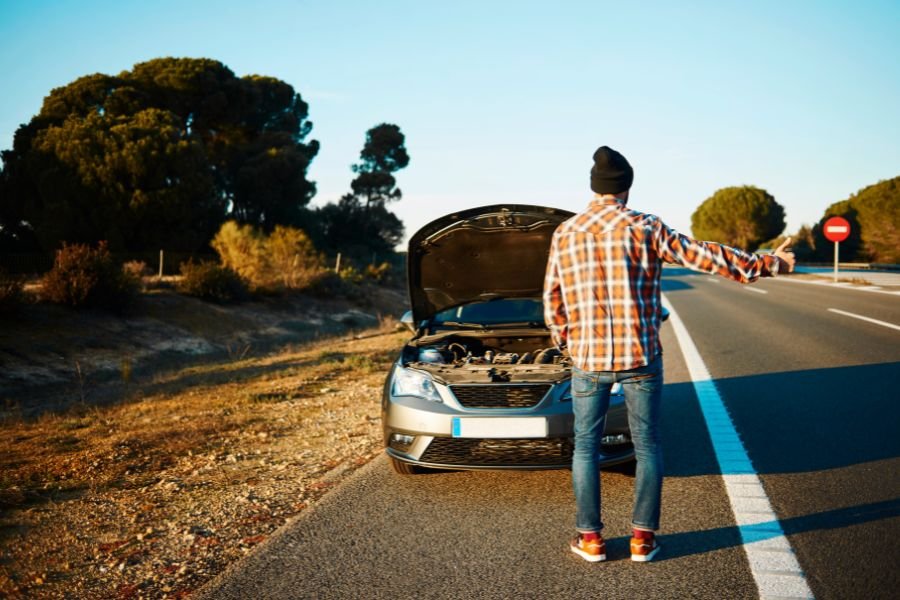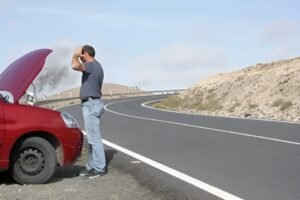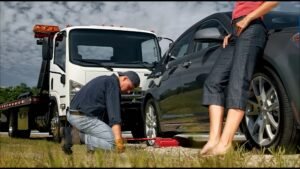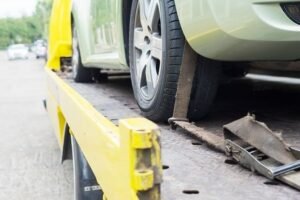You most likely encounter tow trucks on the road assisting vehicles that have broken down or been in collisions daily. However, have you ever seen that tow trucks differ in appearance? This is because different problems call for different kinds of towing. There is an appropriate method for towing a car, regardless of whether you have been in an accident, need to move a specific vehicle, or your vehicle won’t start. To make sure you are prepared in case you ever need a towing service.
What is towing?
Towing is the process of employing a specialized tow truck to move a damaged, disabled, or improperly parked car from one place to another. It is essential for car transportation, accident recovery, and roadside assistance. Tow trucks are outfitted to safely handle a wide range of vehicle kinds and circumstances. Towing makes sure your car gets to its destination safely, whether it’s a planned move or a breakdown. Expert towing services are taught to work effectively while lowering the danger to the car and other drivers.
Why It’s Important to Understand Towing Types
Not every towing situation is the same, and that’s why there are various tow services to match different needs. Depending on your vehicle’s size, condition, and intended distance, you may require a different type of tow.
Let’s examine the three most popular forms of towing.
1. Flatbed Towing
With good reason, flatbed towing is one of the most frequently requested services. A flatbed tow vehicle with a sizable, hydraulically inclined bed is involved. The car is secured for safe transportation after being driven or winched onto the flatbed.
Best for:
- Vehicles with four-wheel drive (4WD) and all-wheel drive (AWD).
- Classic and luxury vehicles.
- Vehicles damaged in accidents.
- Transportation over long distances.
Benefits:
- Since all of the wheels are off the ground, there is little chance of damage.
- Perfect for cars that can’t be operated.
- Offers dependable, safe transportation.
2. Hook and Chain Towing
This conventional technique ties a car to the back of a tow truck using chains. The back wheels of the car slide along the road as it is partially raised off the ground. While it’s not as common today, it’s still used for specific situations.
Best for:
- Junk or wrecked cars are on their way to the scrapyard.
- Short-distance towing.
- Vehicles with damaged or missing wheels.
Caution
For modern vehicles, hook and chain towing is usually avoided since it can harm the underside, bumper, or drivetrain. Currently, towing companies mostly employ it when handling vehicles that are unregistered or inoperable.
3. Wheel Lift Towing
A more contemporary and vehicle-friendly variation of the hook and chain technique is wheel-lift towing. It employs a metal yoke that goes beneath the front or rear wheels in place of chains. After that, the tow truck raises the car just enough so that it can roll on its other two wheels.
Best for:
- Vehicles with front-wheel drive or rear-wheel drive.
- Short to moderate distances.
- Fast roadside recovery.
Advantages
- More affordable than flatbed hauling.
- Quicker setup time.
- Damage danger is lower than with a hook and chain.
Which Towing Service Is Right For You
The best towing technique for you will depend on your particular situation. Here is a quick guide:
Scenario |
Recommended Towing Type |
| The vehicle won’t start | Flatbed or wheel-lift |
| The accident involved a vehicle | Flatbed |
| Long-distance towing | Flatbed |
| A quick relocation of a trash vehicle chain and hook | Hook and chain |
| In an urban breakdown, a small car | Wheel-lift |
If you’re not sure, call a reputable towing company and explain the kind of vehicle you have and the problem you’re facing. A trustworthy supplier will suggest the most cost-effective and secure option.
Towing Safety Tips For Drivers
Stay Visible: If your car breaks down, turn on your hazard lights right away.
Ensure Safety: Try to move your vehicle to the shoulder or side of the road.
Call a Professional: Don’t take assistance from unlicensed tow trucks.
Employ Warning Devices: If it is safe to do so, position safety cones or reflective triangles behind your vehicle. This provides an additional degree of protection and warning to other drivers.
Final Words
Whether you need to relocate a broken-down truck, transport a historic car, or pull a damaged car, knowing the three basic towing types—flatbed, hook and chain, and wheel-lift—will help you make an informed choice.
To keep your car safe and secure, a reputable towing company will evaluate your situation and suggest the best course of action. It is possible to make towing less stressful if you have the proper crew and the right understanding.
Searching for a trustworthy towing company in your area? Get in touch with us for tow services that are quick, professional, and reasonably priced. Contact us today at (626) 412-6119.
Frequently Asked Questions
What type of towing is safest for my car?
Because all four wheels are off the ground, flatbed towing is frequently seen as the safest choice because it lowers the possibility of damage occurring during transit. Luxury, vintage, or all-wheel-drive cars are particularly advised to use it.
How can I determine the type of towing service I need?
The condition, size, and distance that your car needs to be moved all play a role. Whether you need a flatbed, wheel-lift, or hook and chain, a skilled towing business will evaluate your problem and suggest the best path.
What should I do if my car breaks down on the highway?
If you can, move to the shoulder, turn on your hazard lights, and wear a seatbelt while remaining inside. Instead of accepting assistance from unidentified tow trucks, call a reputable towing company.







